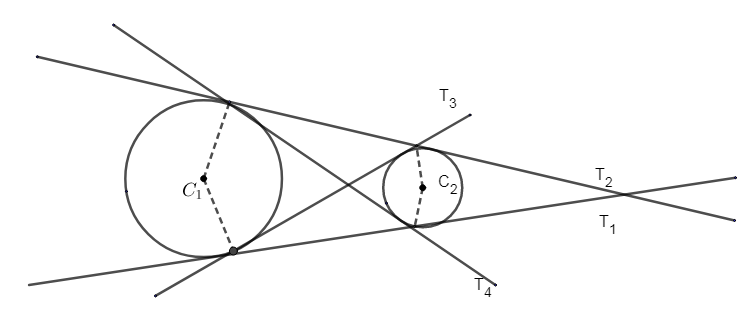Question
Question: Find the number of the common tangents to the circle \[{{x}^{2}}+{{y}^{2}}-4x-6y-12=0\] and \[{{x}^{...
Find the number of the common tangents to the circle x2+y2−4x−6y−12=0 and x2+y2+6x+18y+26=0.
Solution
Hint: Write down the conditions for getting common tangents. Take C1 and C2 as the center of the circle and r1 and r2 as the radius. From the 2 given equations for the center and radius of the circle, find C1C2 using distance formula and (r1+r2). Compare their value with the conditions.
Complete step-by-step answer:
We have been given the equation of two circles. Let us call the circles as C1 and C2. Now both these circles have a common tangent. Take the radius of both circles as r1 and r2.
Now we don’t know where the common tangent meets. Let us look into some conditions of how common tangents can be formed.
(i) When one circle lies completely inside the other without touching then there are no common tangents: - C1C2<∣r1−r2∣.
(ii) When 2 two circles touch each other internally, then 1 common tangent. i.e. ∣r1−r2∣=C1C2.
(iii) When 2 circles intersect in two real and distinct points, 2 common tangents can be drawn to the circle. i.e. ∣r1−r2∣<C1C2<r1+r2.
(iv) When 2 circles touch each other externally, 3 common tangents. r1+r2=C1C2.
(v) When 2 circles neither touch nor intersect and one lies outside the other, then 4 common tangents. i.e. r1+r2<C1C2.

From the figure T3 and T4 represent the internal common tangent.
T2 and T1 represent the external common tangent.
Now given to us the equation of circle,
